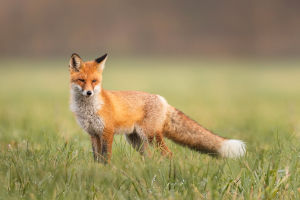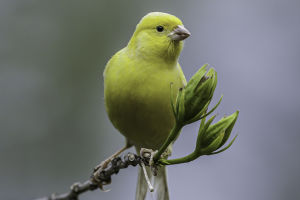The Violet Sabrewing Hummingbird, known scientifically as Campylopterus hemileucurus, is a captivating species found primarily in the mountainous and forested regions of Mexico and Central America.
This hummingbird is the largest among the hummingbird species in Central America, known for its remarkable size and vibrant colors.
It thrives in various habitats, from humid mountain forests to gardens and even banana plantations. Whether you are an avid birdwatcher or just a nature enthusiast, the Violet Sabrewing is sure to impress with its unique characteristics and behaviors.
Distinctive Physical Traits
This species exhibits gender dimorphism, meaning males and females look quite different. Males are stunning with their deep purple-blue plumage, while females sport a greenish hue, with white markings on their tail feathers. The males' wings are specially adapted, with flattened and thickened outer feathers that enhance their flight abilities. These hummingbirds are known for their graceful, hovering flight style and their ability to fly backward, a trait typical of most hummingbirds.
In terms of size, the Violet Sabrewing Hummingbird measures around 13-15 cm in length, with males weighing about 11.8 grams and females around 9.5 grams. With such a large size, it stands out among its fellow hummingbird species.
Habitat and Range
The Violet Sabrewing is primarily found in the humid highland forests of southern Mexico, including areas such as Guerrero, Oaxaca, and Veracruz, and extends through Central America, reaching countries like Costa Rica and Panama. It inhabits elevations ranging from 1,000 to 2,500 meters above sea level but can occasionally be found at lower altitudes, particularly during the breeding season.
The bird is often seen near forest edges, gardens, and agricultural areas, such as banana plantations, making it adaptable to both natural and human-influenced environments.
Feeding and Diet
Like other hummingbirds, the Violet Sabrewing primarily feeds on nectar, though it also consumes insects. This species prefers flowers that are radially symmetric, as they can hover effortlessly and feed without the need to move around the flower excessively. Despite its large size, the Violet Sabrewing is not particularly aggressive, and other smaller hummingbirds will often yield to it at feeding sites. This bird has excellent vision, enabling it to locate flowers from a distance, and its tongue is specially adapted to collect nectar efficiently.
The Violet Sabrewing's metabolism is incredibly fast, so it requires large amounts of nectar daily—sometimes consuming up to twice its body weight in nectar alone. It also forages for insects, particularly spiders and other small arthropods, supplementing its diet with protein-rich food.
Reproductive Habits
The breeding season for the Violet Sabrewing spans from May to October, coinciding with the rainy season in its habitat. During this time, males engage in elaborate courtship displays, gathering in small groups and singing from the tops of trees. Females select mates based on these performances, but the bond is brief, as the males typically leave after mating. The females are solely responsible for building nests and raising the young.
Nests are usually built on small branches near streams or in deep valleys, about 1-6 meters above the ground. These nests are crafted from plant fibers, moss, and other natural materials, forming sturdy, cup-shaped structures. The female lays two white eggs, which hatch after about 20 days. The chicks fledge after 22-24 days. The successful hatching rate is around 70%, which is quite high compared to other hummingbird species.
Threats and Conservation Status
The Violet Sabrewing is currently classified as "Least Concern" by the International Union for Conservation of Nature (IUCN), thanks to its large population and wide distribution range. However, its eggs and nests are at risk from predators such as snakes, cats, and birds of prey. Fortunately, adults are less vulnerable due to their larger size and ability to avoid most threats. In the wild, the Violet Sabrewing does not migrate, remaining in its territory year-round, as the environment consistently offers ample food sources.
Final Thoughts
The Violet Sabrewing Hummingbird is a true gem of Central America, with its majestic size and striking appearance. Whether you're exploring its natural habitat in the forests of Mexico and Central America or learning about its fascinating behavior, this species stands out as one of the most intriguing hummingbirds to observe. Its unique flight capabilities, diet, and breeding habits make it a truly remarkable bird in the world of nature. So, next time you find yourself in these regions, keep an eye out for the Violet Sabrewing—it’s an experience you won’t forget!
Lykkers, we hope you enjoyed this deep dive into the world of the Violet Sabrewing Hummingbird! If you ever get the chance to see one in person, don't miss out on the opportunity to witness its beauty up close.


